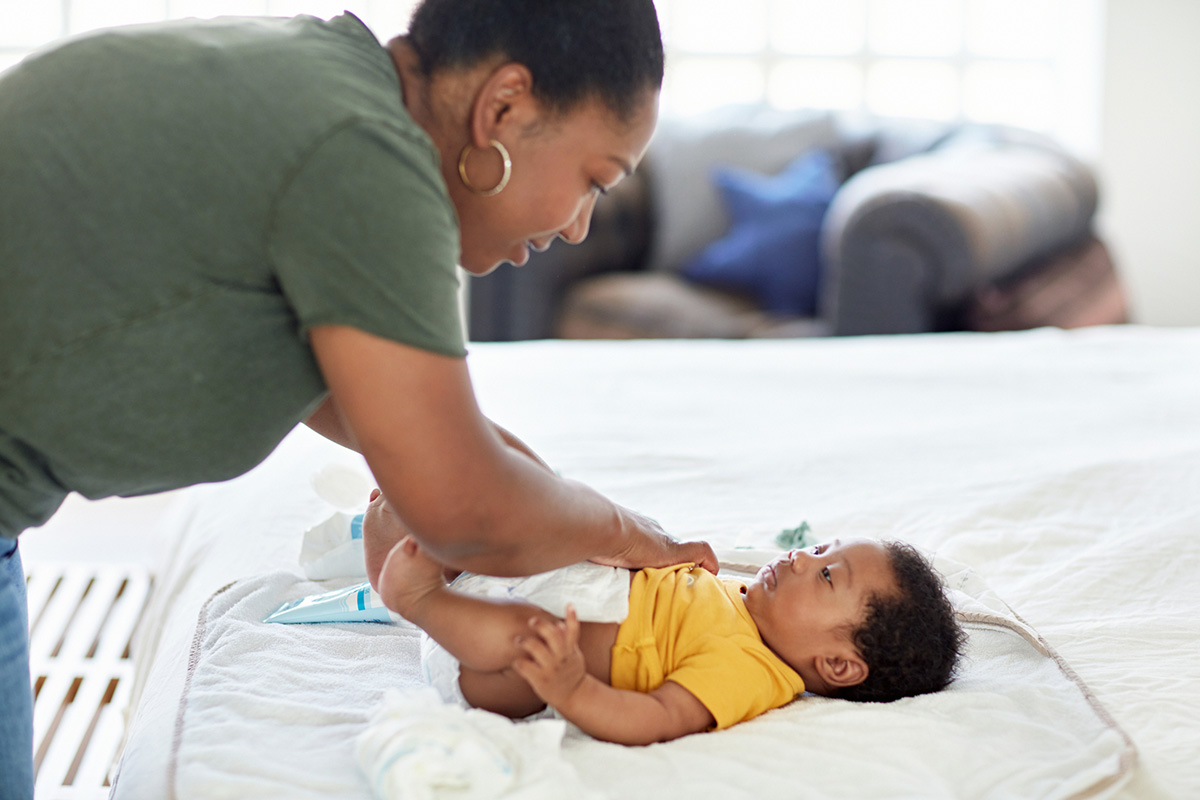
By Dr. Elizabeth Schneck, MD, Tidewater Children's Associates
As many parents can attest, diaper rashes are very common. Fortunately, you can help protect your baby's sensitive skin with the following simple steps.
- Don't skip diaper changes. The longer a dirty diaper stays on, the more exposed your baby's skin is to moisture, chafing, and irritation.
- Choose gentle cleansing products. When changing your baby's diaper, use wipes that are alcohol and fragrance-free. Alternatively, a simple solution of water and non-soap gentle cleanser can do the trick. Always make sure the skin is dry before putting on a fresh diaper to avoid trapping moisture.
- Shield your baby's skin. A generous layer of fragrance-free zinc oxide or petrolatum on the skin will help protect against the diaper's contents.
- Use highly absorbent diapers. Higher absorbency means drier skin. While cloth diapers are eco-friendly, they tend to be less absorbent than most disposables. If you prefer cloth diapers and your baby develops a rash, consider using disposables until the rash heals.
- Leave some breathing room. Make sure the diaper isn’t too tight – especially overnight. A snug diaper can rub against your baby’s delicate skin and cause irritation. A looser diaper can help prevent friction and keep your baby comfortable.
Recognizing Common Diaper Rashes
The most common types of diaper rash are irritant dermatitis and yeast infections:
- Irritant dermatitis is the most common type of diaper rash. It appears as pink or red patches on areas covered by the diaper and is caused by prolonged contact with urine and stool.
- Yeast infections are usually shiny and bright red or pink with sharp edges. You may also see small pink bumps or pimples. In severe cases, the skin may crack, ooze, or bleed. Be sure to wash your hands thoroughly before and after diaper changes if you suspect a yeast infection.
Rashes may also be caused by bacteria, allergies, or other rare conditions, which are much less common.
If your baby has diaper rash, do not use over-the-counter antibiotic ointments, which can worsen skin irritation.
When to Call the Doctor
Most diaper rashes can be treated at home with the above tips. However, if any of the following occurs, contact your pediatrician:
- The rash does not improve within two to three days while using the care tips outlined above. In some cases, a prescription medication is needed.
- Pimples, peeling, oozing, or crusty sores appear.
- A bright pink or red rash with red spots at the edges develops while your baby is taking an antibiotic.
- Your baby shows signs that the rash is causing severe pain, such as constant fussiness or crying.
- A fever accompanies the rash.






